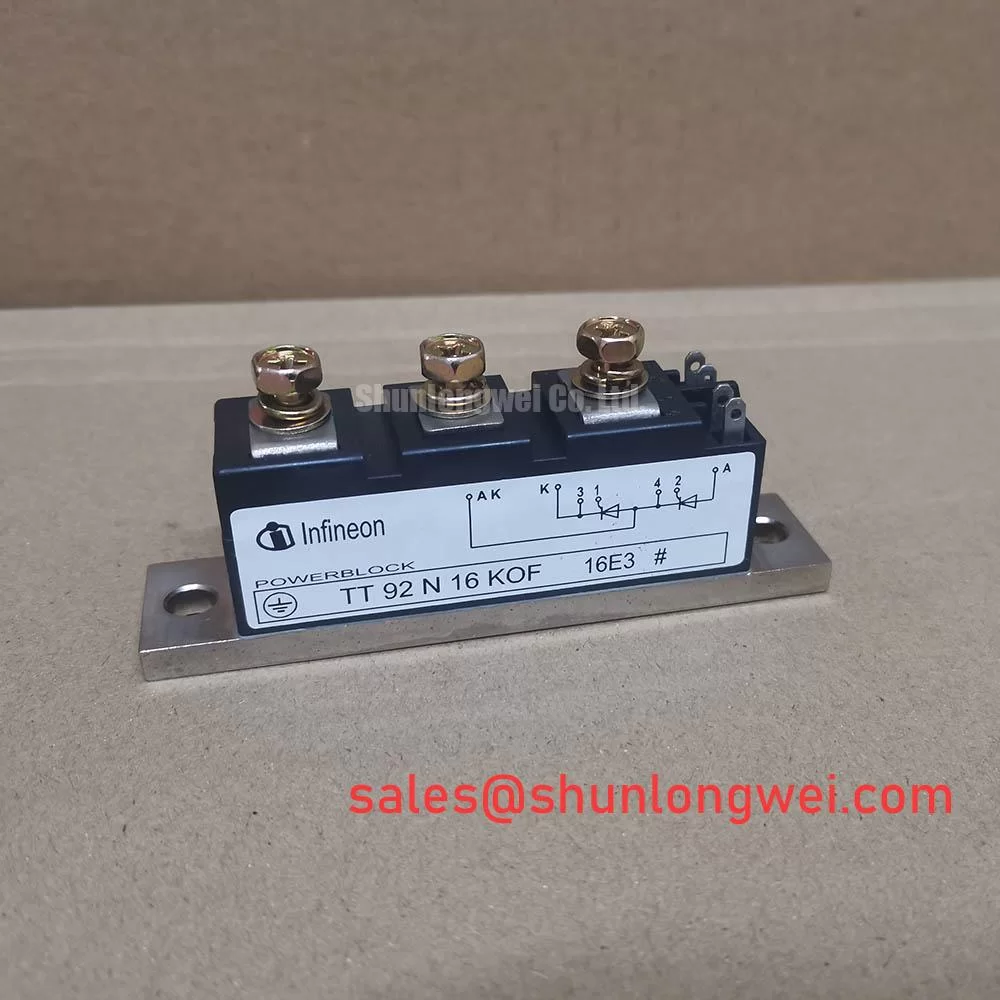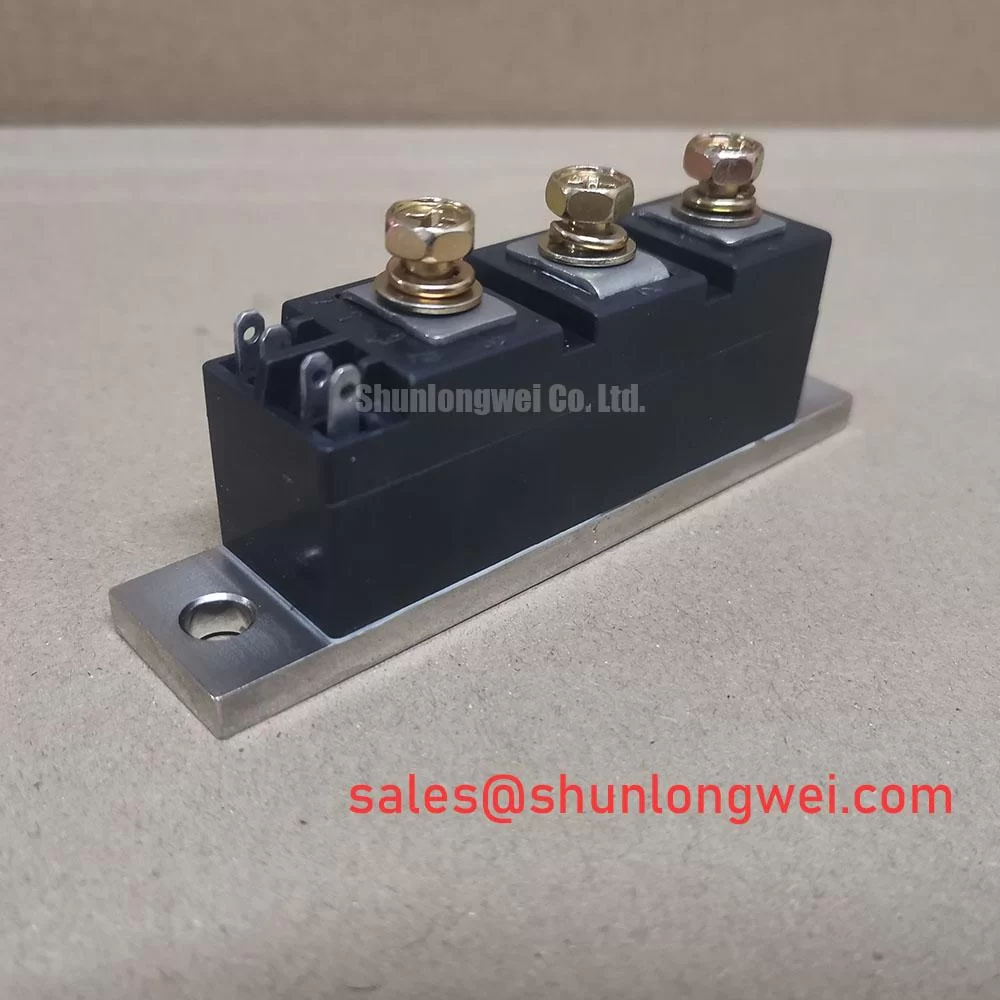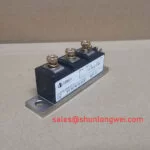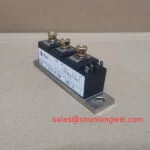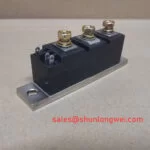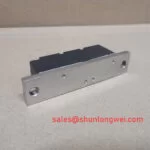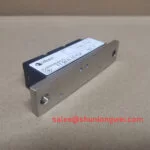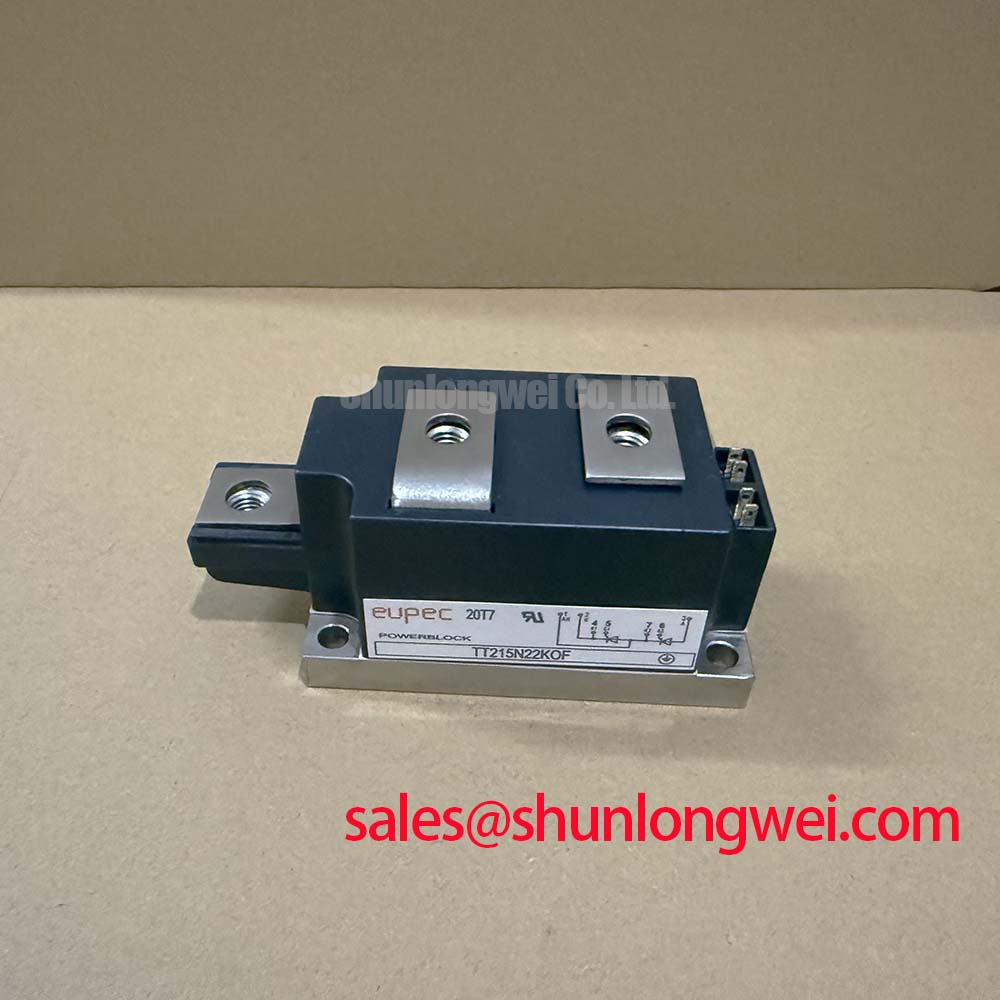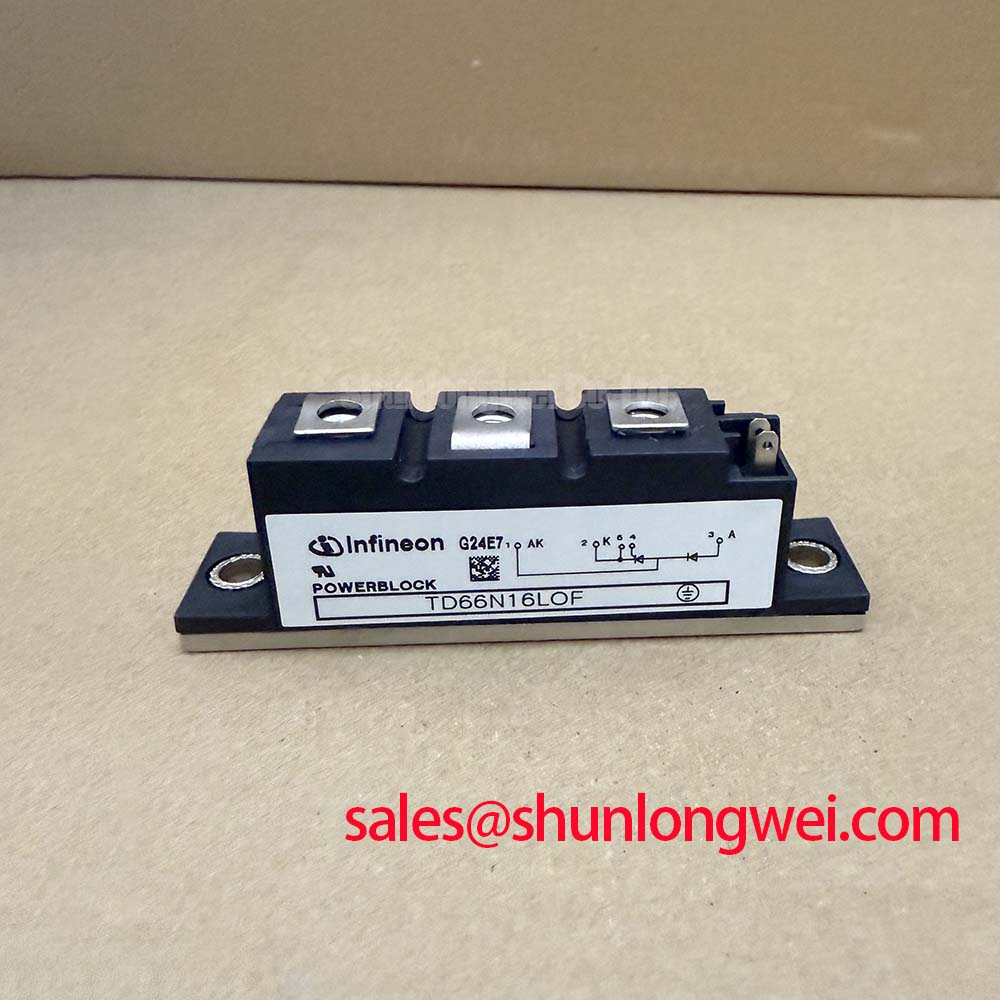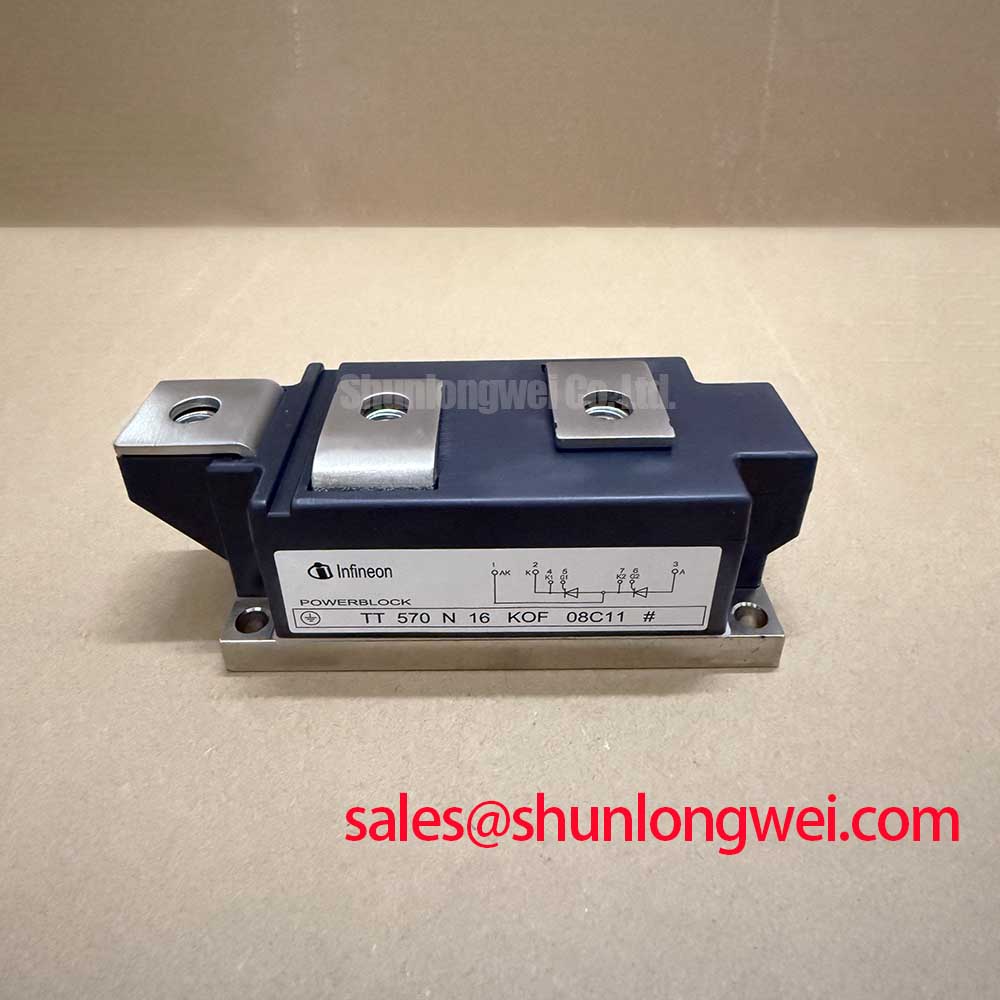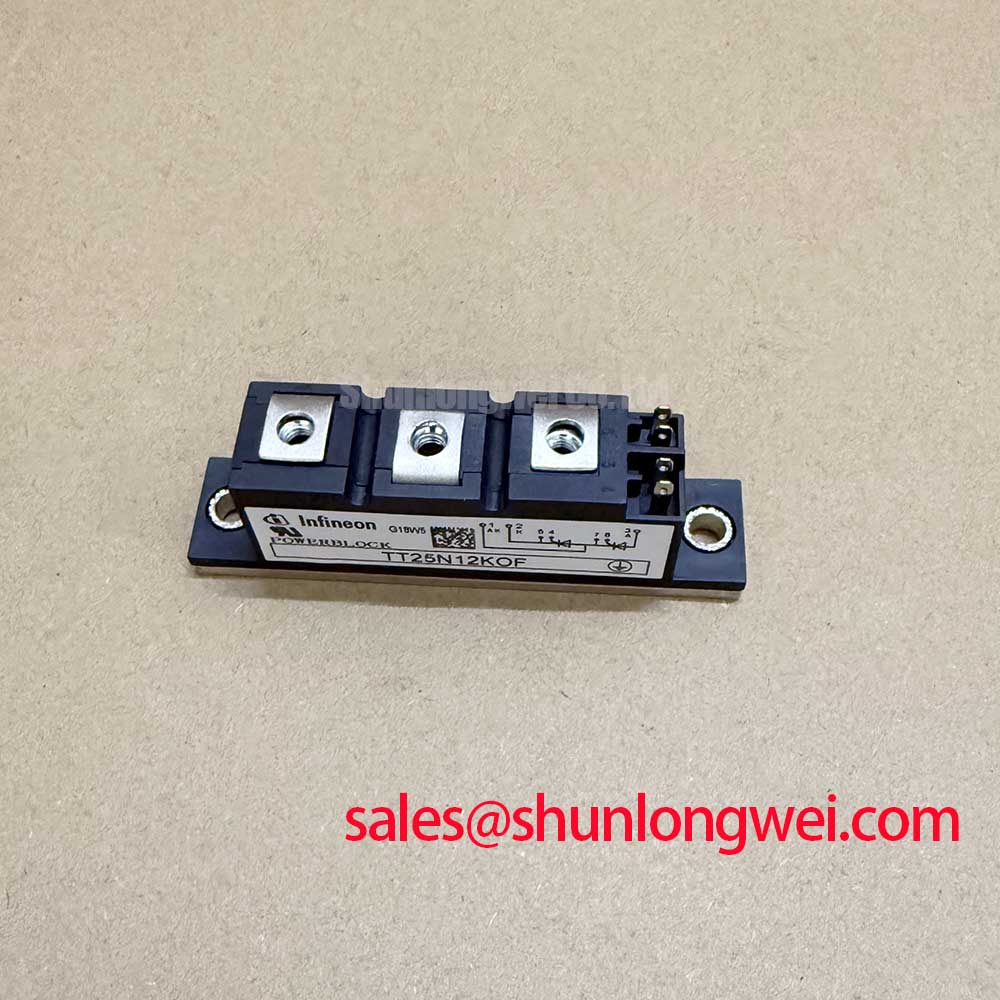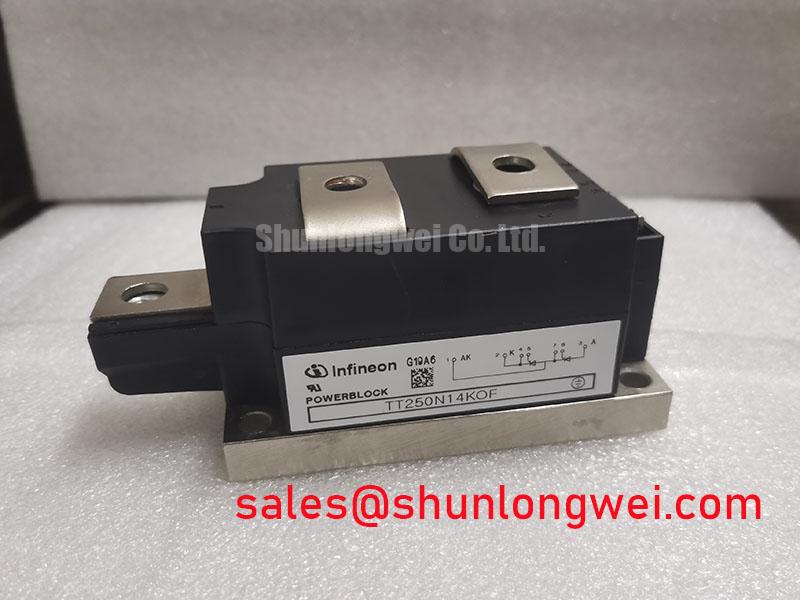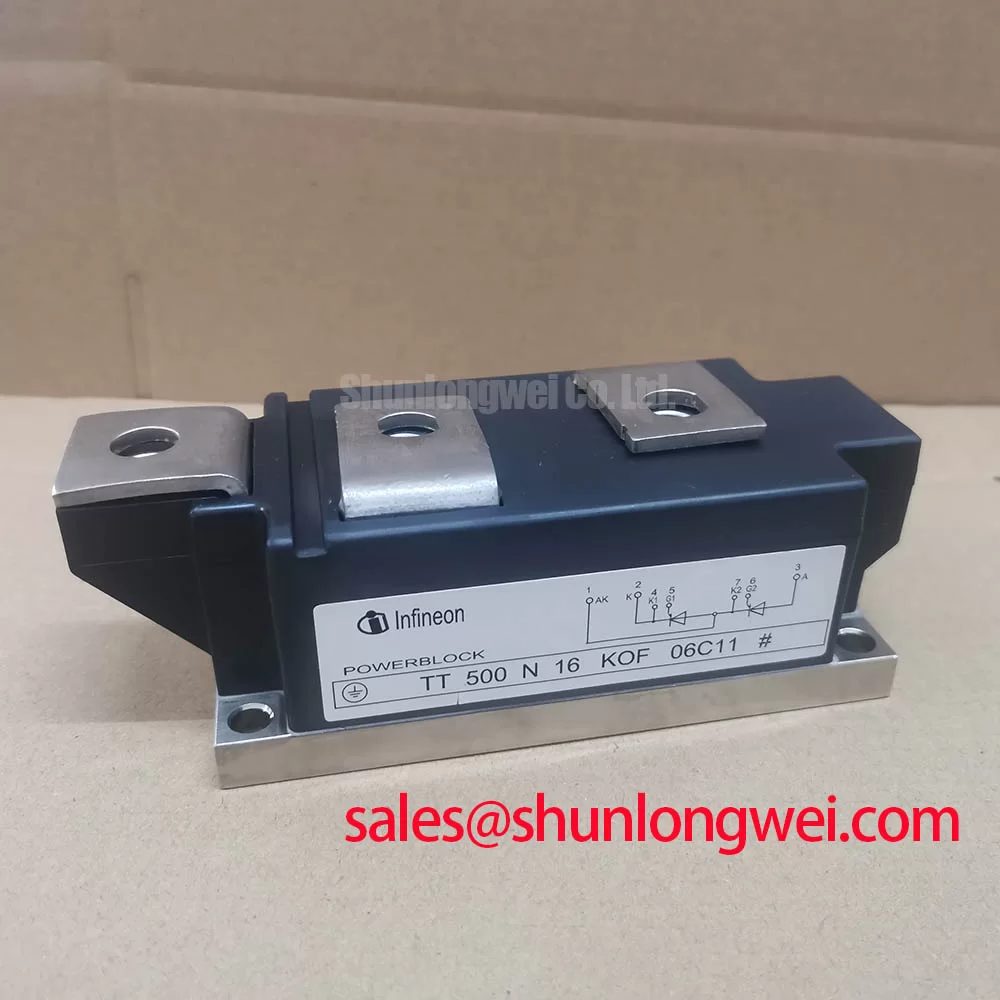Content last revised on November 18, 2025
TT 92 N 16 KOF: High-Reliability 1600V Dual Thyristor Module
Introduction to the TT 92 N 16 KOF Power Module
Engineered for Longevity in Demanding Industrial Power Control
The Infineon TT 92 N 16 KOF is a dual thyristor module engineered for superior long-term reliability in high-voltage industrial applications, leveraging pressure contact technology to mitigate common solder fatigue failure modes. It delivers robust performance with key specifications of 1600V | 95A | ITSM 1550A. The core engineering benefits include enhanced operational lifetime and simplified thermal design. This module directly addresses the need for durable power control by eliminating solder wire bonds, a primary failure point in systems with frequent thermal cycling. For industrial AC controllers and soft starters operating on 575V or 690V lines, the TT 92 N 16 KOF's robust design provides the optimal foundation for system dependability.
Key Parameter Overview
Decoding the Specs for Enhanced Electrical and Thermal Reliability
The specifications of the TT 92 N 16 KOF are tailored for high-stress industrial environments. The 1600V blocking voltage provides a substantial safety margin for nominal 575V and 690V AC lines, while its surge current capability ensures survival during fault conditions. The following table highlights the critical parameters that define its performance envelope.
| Parameter | Symbol | Value | Conditions |
|---|---|---|---|
| Repetitive Peak Reverse Voltage | VRRM | 1600 V | - |
| Average On-State Current | ITAV | 95 A | TC = 85°C |
| Surge Current (Non-Repetitive) | ITSM | 1550 A | t = 10 ms, Tvj = 25°C |
| Threshold Voltage | VT0 | 0.85 V | Tvj = 125°C |
| On-State Slope Resistance | rT | 0.8 mΩ | Tvj = 125°C |
| Thermal Resistance, Junction to Case | RthJC | 0.25 K/W | per Thyristor |
| Insulation Test Voltage | VISOL | 3000 V | RMS, t = 1 min. |
For a complete breakdown of all electrical and thermal characteristics, Download the TT 92 N 16 KOF datasheet for detailed specifications and performance curves.
Application Scenarios & Value
System-Level Benefits in Industrial Motor Control and Rectification
The TT 92 N 16 KOF module is the ideal choice for power conversion systems where operational uptime is paramount. A primary application is in Motor Soft Starter units for industrial machinery, such as large conveyor belts or pump systems. The engineering challenge here is managing the significant inrush current during motor startup without component degradation. The module's high surge current rating (ITSM of 1550A) provides the necessary robustness to handle these repeated start-up stresses, preventing premature failure and costly downtime. What is the primary benefit of its pressure-contact design? Enhanced long-term reliability by eliminating solder fatigue.
Furthermore, in controlled AC Line Rectification for applications like DC power supplies or battery chargers, the two thyristors in a common-cathode configuration allow for precise phase angle control. The module's electrically insulated baseplate simplifies the mechanical and thermal design, as it can be mounted directly onto a grounded heatsink without needing extra insulating materials. This not only reduces assembly time and BOM costs but also improves the thermal path, leading to cooler and more reliable operation. For applications demanding higher current capabilities, the related TT162N16KOF offers a similar voltage class with increased capacity. For full-bridge rectifier designs, this module can be paired with a diode module like the SKKD162/16.
Frequently Asked Questions (FAQ)
What is the primary advantage of the pressure contact technology in the TT 92 N 16 KOF?
The core advantage is significantly improved reliability and operational lifetime. Unlike soldered modules where thermal cycling can cause solder joints to crack and fail, pressure contact technology eliminates this failure mechanism entirely. This results in superior power cycling capability, making it ideal for applications with frequent start/stop or load-varying cycles.
How does the 1600V rating benefit designs for industrial AC lines?
A 1600V rating provides a critical safety margin for systems connected to 575V or 690V three-phase AC grids, which are common in heavy industrial settings. This high blocking voltage capability ensures the device can withstand the voltage transients and spikes that frequently occur on these lines, preventing catastrophic failure and enhancing overall system robustness.
What does the high ITSM rating of 1550A signify for a soft starter application?
This high surge current rating signifies exceptional ruggedness. During motor startup, the initial current can be 5-8 times the nominal operating current. The 1550A ITSM rating ensures the thyristor can safely handle these repetitive inrush current events without degradation, which is fundamental to the long-term reliability of any motor soft starter.
Does the electrically insulated baseplate simplify the thermal design process?
Yes, significantly. The aluminum oxide (Al2O3) ceramic baseplate provides excellent electrical insulation. This allows designers to mount multiple modules onto a single, common heatsink without needing separate, costly, and thermally inefficient insulating pads. This simplifies assembly, reduces part count, and creates a more efficient and reliable thermal management system.
Technical Deep Dive
A Closer Look at Pressure Contact Mechanics for Lifetime Extension
At the heart of the TT 92 N 16 KOF's durability is its internal construction. Conventional power modules rely on soldering and wire bonding to connect the silicon die to the terminals and baseplate. While effective, these connections are often the weakest link, susceptible to fatigue from mechanical stress induced by mismatched thermal expansion coefficients. The pressure contact design bypasses this vulnerability. Instead of solder, it relies on a precisely engineered spring-loaded clamping system to maintain constant, uniform pressure on the internal components.
Think of it like a high-performance engine head gasket, which uses the immense clamping force of head bolts to create a perfect seal that withstands extreme pressure and temperature cycles. Solder, in contrast, is more like a rigid glue that can become brittle and crack over time. By eliminating solder, this design eradicates the primary wear-out mechanism, directly translating to a vastly extended operational life, especially in applications defined by rigorous thermal cycling.
Industry Insights & Strategic Advantage
Aligning with Industry 4.0 Demands for Uptime and Reduced TCO
The move towards Industry 4.0 and fully automated manufacturing places an unprecedented premium on equipment reliability. In these interconnected environments, the failure of a single component, such as a motor drive, can halt an entire production line, leading to significant financial losses. The design philosophy of the TT 92 N 16 KOF directly supports these modern industrial objectives. Its emphasis on intrinsic reliability aligns perfectly with the goal of maximizing Mean Time Between Failures (MTBF) and minimizing unscheduled downtime.
For system integrators and plant managers, selecting a component like the TT 92 N 16 KOF is a strategic decision that impacts the Total Cost of Ownership (TCO). While the initial component cost is a factor, the reduction in maintenance, repair, and downtime-related losses over the system's lifespan provides a compelling economic advantage. This module's robust design, compliant with industrial standards like IEC 60947, makes it a forward-looking choice for building the dependable, efficient, and cost-effective power systems required by today's advanced industries.
A Strategic Approach to System Reliability
Ultimately, the selection of the Infineon TT 92 N 16 KOF transcends a simple component choice; it represents a strategic investment in long-term system dependability. For engineers designing power control systems for critical industrial infrastructure, prioritizing a design free from known failure modes like solder fatigue is not just best practice—it is essential for achieving the uptime and low total cost of ownership that modern industry demands. This module provides a proven, robust foundation for building power electronics that are designed to last.

